#archduke karl ferdinand of austria-teschen
Explore tagged Tumblr posts
Text

Archduke Karl of Austria-Teschen and his children, by Johann Ender, 1832. From left to right: Archduke Wilhelm, Archduke Karl Ferdinand, Archduchess Maria Theresa (future Queen of the Two Sicilies), Archduke Karl, Archduke Albrecht, Archduchess Maria Karolina, and Archduke Friedrich Ferdinand. In the left corner there is a bust of Princess Henriette of Naussau-Weilburg, the children's late mother.
#i can't remember how I ended up stumbling upon this portrait tbh#but I've got to learn more about the teschen branch#archduke karl of austria duke of teschen#queen maria theresa of the two sicilies#archduke albrecht of austria duke of teschen#archduke wilhelm of austria-teschen#archduke karl ferdinand of austria-teschen#archduchess maria karolina of austria-teschen#archduke friedrich ferdinand of austria-teschen#house of habsburg#artist: johann ender
26 notes
·
View notes
Text
Hunting after the war
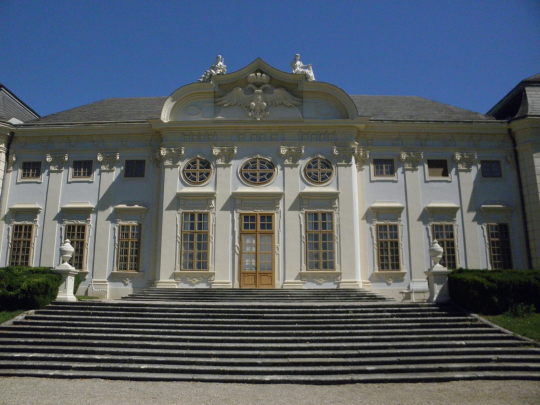
When the architect Johann Lukas von Hildebrandt began planning the construction of Schloß Halbturn in 1701, it was only a hunting lodge and Austria was still under the rule of Emperor Joseph I. Located on the borderlands between the Austrian and Hungarian possessions, it was only a short distance from Lake Neusiedl.
When the original construction was completed in 1711, a new emperor assumed the highest office in the Holy Roman-Germanic Empire, Karl VI, who ended his Spanish adventure by attempting to become the effective king of Spain under the name of Charles III. Halbturn was to become his hunting lodge for the new times that awaited him.
However, the documented existence of Halbturn dates back at least to the 15th century, when the Counts of Bazin (Bösing, in German, the present-day Slovak town of Pezinok) disputed the boundaries of their possessions with the abbey of Heiligenkreuz. On that occasion, the Hungarian king Mátyás Hunyadi, better known as Matthias Corvinus, was asked to act as arbitrator, and the abbey benefited from property and vineyards.
The area around Halbturn was present in Roman times, documented by a cemetery from the Imperial period and a Roman villa. A Jewish community is believed to have existed as early as the 3rd century.
The name Halbturn is identified with a half-ruined tower or damaged fortification. Its origin may have served to protect the road from Neusiedl to Altenburg (the modern Hungarian town of Mosonmagyaróvár) and from Ödenburg (Sopron in Hungarian) to Preßburg (the German name for the present-day Slovak capital, Bratislava).
In 1516, the Bazin family died out and their possessions reverted to the crown. The then king Lajos II of Hungary and Bohemia (under the name Ludvík I) bequeathed the estate to his wife Maria, sister of the Austrian Archduke Ferdinand I, who took over after her husband's death at the hands of the Turks at the battle of Mohács (1526).
When Queen Maria died in 1558, the possession of Halbturn passed to the Austrian Habsburgs, who already held the Imperial, Bohemian, Croatian and Hungarian crowns.
But let us return to the 18th century. During the reign of Karl VI's daughter Maria Theresia, Halbturn was rebuilt under the direction of the architect Franz Anton Hillebrandt as the summer residence of the regents of Hungary, Archduchess Maria Christina and her husband, Albert of Saxony-Teschen.
In the 19th century, the usual name was the Hungarian Féltorony, an evolution of Felthorom, documented in the 15th century, until after World War I most of the territory surrounding Lake Neusiedl became the present-day federal state of Burgenland, which was incorporated into the Republic of Austria in 1921.
3 notes
·
View notes
Photo


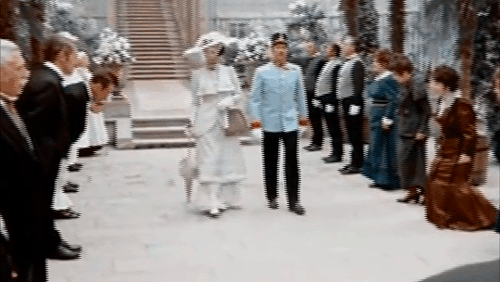
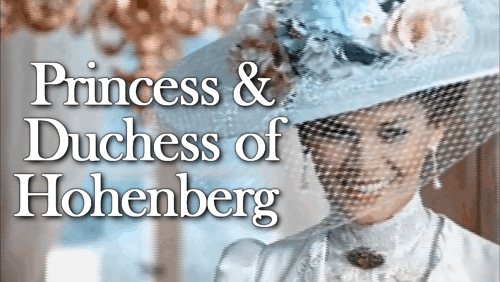

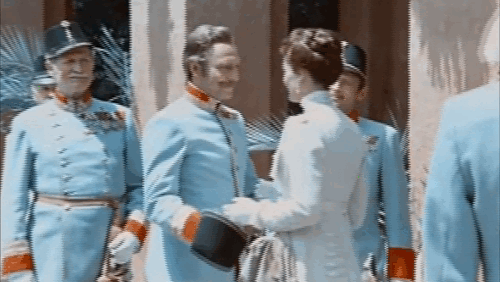




House of Chotek & of Habsburg: Countess Sophie Chotek of Chotkowa and Wognin
Sophie was born as the fifth child of Count Bohuslav Chotek of Chotkow and Wognin and his wife Countess Wilhelmine Kinsky of Wchinitz and Tettau. Her siblings were Count Wolfgang Chotek, Countess Zdenka Chotek, Princess Marie of Thun and Hohenstein, Countesses Karoline and Henriette of Nostitz-Rieneck, Countess Oktavia of Schönburg-Glachau and Countess Antoinette Wuthenau-Hohenthurm.
Sophie grew up in Dresden where her father had worked as diplomat. She had received an education and led the household of her father after her mother had died. When she fell for her future husband Archduke Franz Ferdinand, most of her sisters were already married and one of them even served Crown Princess Stéphanie of Austria-Hungary as a lady-in-waiting. When exactly the couple actually met for the first time is debated to this day. The time frame is somewhen between 1894 and 1897. However this may be, they were able to spent a few days icognito at Bad Neuenahr in 1898 with the help of a former lady-in-waiting of Franz Ferdinand’s aunt Empress Elisabeth.
The relationship only became public in 1899. The year before, Sophie had made clear she wanted to live closer to her lover, since she was still living with her father in Dresden. But Franz Ferdinand wanted to avoid the Viennese gossip and suggested she should apply as a lady-in-waiting to Archduchess Isabella, The Duchess of Teschen, who lived with her family in Bratislava. Isabella was supposedly a difficult mistress to please, so Sophie was reluctant but eventually did apply and received the post. From now on, Franz Ferdinand accepted every invitation of Archduke Friedrich’s family and visited them twice or thrice a week. Isabella hoped he was interested in her eldest daughter Archduchess Maria Christina of Austria-Teschen. One day, Isabella discovered a locket that Franz Ferdinand had dropped on the tennis court and opened it. She had expected to find a picture of her daughter in it but instead she found one of Sophie inside.
As soon as the relationship became public, the court tried to separate the couple. Sophie was not of high enough rank for a member of the House of Habsburg’s main line and heir to the throne, although her family had been nobles since the middle ages. Only when Franz Ferdinand’s stepmother Infanta Maria Theresa of Portugal spoke to Emperor Franz Joseph, the couple received permission to marry morganatically on April 8th, 1900, which they did less than three months later on July 1st. The condition was that Franz Ferdinand signed a document which effectively removed his future children from the line of succession and prevented him from crowning, in case of a succession to the throne, Sophie Empress of Austria, Queen of Hungary, Bohemia, Croatia or any other Habsburg realm or even making her an archduchess. This was especially important since Hungary did not practise the concept of morganatical marriages but instead viewed all marriages as equal. For her wedding, Sophie received the title of Fürstin (Princess) of Hohenberg and the style of Serene Highness. Nevertheless, Sophie was treated as a second-class noble by the Viennese society. The only one she was closed with in the Imperial family was Crown Prince Rudolf’s widow Princess Stéphanie of Belgium.
Only in 1909, after the birth of all of her children, she received the elevation to Duchess and the style of a Highness. She received many congratulation letters for it, one of them came form the German Emperor Wilhelm II who was a friend of her husband. But while her husband ranked only below The Emperor as his heir, she ranked behind all the archduchesses as well as the mediatized princesses and countess of Austria and Hungary. This difference in rank kept some courts from hosting the couple as it was difficult to do so without making any mistakes. But this did not keep the Romanian King Karl I. and his wife Elisabeth of Wied in 1909 and the British King George V and his wife Mary of Teck in 1913 from hosting them.
A little more than half a year after their visit to Britain, Sophie and Franz Ferdinand were dead. They were assassinated in Sarajevo. While he was shot in the neck, a bullet hit her in the abdomen. Their last recorded conversation was her asking him what had happened to him and him begging her to stay alive for the children while calling her by her nickname Sopherl. The murder of Sophie and Franz Ferdinand is regarded as the spark that set World War I in motion. Even in death, protocol took presedence. Franz Ferdinand had the right to be buried in the Imperial Crypt but Sophie did not. Instead they had requested to be buried together at the Habsburg’s summer home of Arstetten castle.
Their children Sophie, Maximilian and Ernst were raised by Sophie’s sister Henriette while their legal guardian became their uncle and good friend of their father Prince Jaroslav of Thun and Hohenstein. Sophie and Maximilian decided to forgive Nedeljko Čabrinović for the murder of their parents after her showed regret for doing it while Ernst did not sign the letter they wrote to him. Ernst and Maximilian were later imprisoned in a concentration camp in Dachau for making anti-Nazi statements after the Annextion of Austria by The Third Reich. But they survived their imprisonment. Through her daughter Sophie is an ancestor of the actors Friedrich and Max von Thun. The latter actually played Franz Ferdinand’s cousin Crown Prince Rudolf in a miniseries in 2006.
// Florinda Bolkan in The Day That Shook the World (1975)
______________________________________________________________
Requested by anonymous
#perioddramaedit#women in history#historyedit#Sophie Chotek#European history#Austrian history#Bohemian history#House of Habsburg#House of Habsburg-Lorraine#House of Chotek#sophie chotek von chotkowa#Sophie Chotek of Chotkowa and Wognin#1900s#20th century#1800s#1890s#19th century#morganatic wives#Duchess Sophie of Hohenberg#period drama#The Day That Shook The World#requests#historic women
180 notes
·
View notes
Photo










1762 Jean-Étienne Liotard - Portraits of children of Francis I, Holy Roman Emperor and his wife, Empress Maria Theresa of Austria:
Archduchess Maria Amalia of Austria, future Duchess of Bourbon-Parma - Archduchess Maria Antonia of Austria, future Marie Antoinette, Queen of France and Navarre
Archduke Ferdinand Karl of Austria, future Archduke of Austria-Este and Governor of the Duchy of Milan - Archduke Maximilian Francis of Austria, future Archbishop and Elector Spiritual of Cologne
Archduchess Maria Christina, future Duchess of Teschen - Archduchess Maria Carolina of Austria, future Queen of Naples and Sicily
Archduchess Maria Josepha of Austria (died in 1767 of smallpox) - Archduke Peter Leopold, future Leopold II, Holy Roman Emperor
Archduchess Maria Elisabeth of Austria, future abbess of the Convent for Noble Ladies in Innsbrück - Archduchess Maria Johanna Gabriela of Austria (died the same year of smallpox)
(Musée d'Art et d'Histoire, Geneva)
478 notes
·
View notes
Text
King Felipe VI of Spain and Archduchess Isabella’s relations
King Felipe and Isabella are double fourth cousins once removed from King Christian IX of Denmark through his children Thrya and son George of Greece , fourth cousins once removed from King Ferdinand II of the Two Sicilies, sixth cousin and sixth cousins once removed from Francis, Duke of Saxe Coburg Salfield, sixth cousins once removed from Leopold II, Holy Roman Emperor, seventh cousins once removed from Philip, Duke of Parma, and eighth cousins once removed as the descendant of Philip V of Spain.
King Christian IX of Denmark
King Felipe:
Christian IX -> George I of Greece -> Constantine I of Greece -> Paul I of Greece -> Queen Sofia of Spain -> King Felipe
Christian IX -> Princess Thyra of Denmark -> Ernest Augustus, Duke of Brunswick -> Queen Frederica of Greece -> Queen Sofia of Spain -> King Felipe
Archduchess Isabella:
Christian IX of Denmark -> Frederick VIII of Denmark -> Princess Ingeborg of Denmark -> Queen Astrid -> Josephine Charlotte, Grand Duchess of Luxembourg -> Archduchess Marie Astrid of Austria -> Archduchess Isabella of Austria
King Ferdinand II of Bourbon-Two Sicilies
King Felipe:
King Ferdinand II -> Prince Alfonso, Count of Caserta -> Prince Carlos of Bourbon-Two Sicilies -> Princess Maria of Bourbon-Two Sicilies, Countess of Barcelona -> King Juan Carlos of Spain -> King Felipe
Archduchess Isabella:
King Ferdinand II -> Princess Maria Annunciata of Bourbon-Two Sicilies -> Archduke Otto Franz of Austria -> Charles I of Austria -> Archduke Carl Ludwig of Austria -> Archduke Carl Christian of Austria -> Archduchess Isabella
Francis, Duke of Saxe-Coburg-Saalfeld
King Felipe:
Francis, Duke of Saxe-Coburg-Saalfeld -> Victoria, Duchess of Kent -> Queen Victoria -> Princess Beatrice -> Queen Victoria Eugenie of Spain -> Infante Juan, Count of Barcelona -> King Juan Carlos of Spain -> King Felipe
Francis, Duke of Saxe-Coburg-Salfeed-> Victoria, Duchess of Kent -> Queen Victoria -> Empress Frederich-> Sophia of Prussia, Queen of Greece -> King Paul of Greece -> Queen Sofia of Spain -> King Felipe
Francis, Duke of Saxe-Coburg-Salfeed-> Victoria, Duchess of Kent -> Queen Victoria -> Empress Frederich-> Kaiser Wilhelm II -> Victoria Louise of Prussia -> Queen Frederica of Greece -> Queen Sofia of Spain -> King Felipe
Archduchess Isabella:
Francis, Duke of Saxe-Coburg-Saalfeld -> Leopold I of Belgium -> Prince Philippe, Count of Flanders -> Albert I of Belgium -> Leopold III of Belgium -> Josephine Charlotte of Belgium, Grand Duchess of Luxembourg -> Archduchess Marie Astrid of Austria -> Archduchess Isabella of Austria
Leopold II, Holy Roman Emperor
King Felipe:
Leopold II, Holy Roman Emperor -> Archduke Charles, Duke of Teschen -> Archduke Karl Ferdinand of Austria -> Archduchess Maria Christina of Austria, Queen of Spain -> King Alfonso XIII of Spain -> Infante Juan, Count of Barcelona -> King Juan Carlos of Spain -> King Felipe
Archduchess Isabella
Leopold II, Holy Roman Emperor -> Francis II, Holy Roman Emperor -> Archduke Franz Karl of Austria -> Archduke Karl Ludwig -> Archduke Karl Ludwig of Austria -> Archduke Otto Franz of Austria -> Emperor Charles I of Austria -> Archduke Carl Ludwig of Austria -> Archduke Carl Christian of Austria -> Archduchess Isabella of Austria
Philip, Duke of Parma
King Felipe:
Philip, Duke of Parma -> Maria Luis, Queen of Spain -> Infante Francisco de Paula of Spain -> Infante Francisco de Asis of Spain -> Alfonso XII of Spain -> Alfonso XIII of Spain -> King Alfonso XIII of Spain -> Infante Juan, Count of Barcelona -> King Juan Carlos of Spain -> King Felipe
Isabella:
Philip, Duke of Parma -> Ferdinand, Duke of Parma -> King Louis I of Eturia -> Charles II, Duke of Parma -> Charles III, Duke of Parma -> Robert I, Duke of Parma -> Felix of Bourbon-Parma -> Jean, Grand Duke of Luxembourg -> Archduchess Marie Astrid of Luxembourg -> Archduchess Isabella
Philip, Duke of Parma -> Ferdinand, Duke of Parma -> King Louis I of Eturia -> Charles II, Duke of Parma -> Charles III, Duke of Parma -> Robert I, Duke of Parma -> Empress Zita -> Archduke Carl Ludwig of Austria -> Archduke Carl Christian -> Archduchess Isabella
Philip V of Spain
King Felipe:
King Philip V of Spain -> King Charles III of Spain -> King Charles IV of Spain -> Infante Francisco de Asis of Spain -> Alfonso XII of Spain -> Alfonso XIII of Spain -> King Alfonso XIII of Spain -> Infante Juan, Count of Barcelona -> King Juan Carlos of Spain -> King Felipe
Archduchess Isabella:
King Philip V of Spain -> Maria Antonia of Spain, Queen of Sardinia -> King Victor Emmanuel I of Sardinia -> Princess Maria Teresa of Savoy -> Charles III, Duke of Parma -> Robert I, Duke of Parma -> Felix of Bourbon-Parma -> Jean, Grand Duke of Luxembourg -> Archduchess Marie Astrid of Luxembourg -> Archduchess Isabella
King Philip V of Spain -> Maria Antonia of Spain, Queen of Sardinia -> King Victor Emmanuel I of Sardinia -> Princess Maria Teresa of Savoy -> Charles III, Duke of Parma -> Robert I, Duke of Parma -> Empress Zita -> Archduke Carl Ludwig of Austria -> Archduke Carl Christian -> Archduchess Isabella
2 notes
·
View notes
Photo

Archduchess Isabella Maria Theresia Christine Eugenie of Austria-Teschen (17 November 1888 – 6 December 1973) was a daughter of Archduke Friedrich, Duke of Teschen and his wife, Princess Isabella of Croÿ.[1] She was a member of the House of Habsburg-Lorraine (her grandfather, Archduke Karl Ferdinand of Austria, was a grandson of Holy Roman Emperor Leopold II).
Isabella was notable for her brief marriage to Prince Georg of Bavaria. Their separation and subsequent annulment were widely reported in newspapers. As a result of this and her later actions as a nurse in the Austrian army, Isabella became considered as a romantic figure; one publication called her "the most romantic heroine of the present war in Austria".
#Archduchess Isabella#isabella of Austria#archduke friedrich#habsburg#Austria#Austrian Empire#the invincible army
2 notes
·
View notes
Photo

The four kids of Archduchess Elisabeth Fransiska and Archduke Karl Ferdinand of Austria Teschen, Friedrich Franz (1856-1936), Maria Cristina , later Queen regent of Spain (1858-1929), Karl Stephan (1860-1933) and Eugen (1863-1954) . Circa 1866
#Antique#Vintage#Victorian#1860s#Victorian children fashion#Royalty#Austria#Habsburg#Archduchess MAria Cristina of Austria Teschen#Queen Regent MAria Cristina of Spain#Archduchess Friedrich Franz of Austria Teschen#Archduke Karl Stephan of Austria-Teschen#Archduke Eugen of Austria Teschen
28 notes
·
View notes
Photo

Archduke Charles of Austria, Duke of Teschen, with his children, painted in 1831 or 1832. He’s shown with daughters Maria Theresa and Marie Karoline, and sons Albert, Karl Ferdinand, Frederick Ferdinand, and Wilhelm Franz.
His wife, Henrietta of Nassau-Weilburg, had died in 1829, as is depicted as a bust on the far left. Another son, Archduke Rudolph, died in infancy in 1822.
#archduke charles#Maria Karoline of Austria#Maria Theresa of Austria#archduke albert#archduke karl ferdinand#archduke frederick ferdinand#archduke wilhelm franz#austria#house of habsburg lorraine#long live the queue#henrietta of nassau-weilburg
35 notes
·
View notes
Text

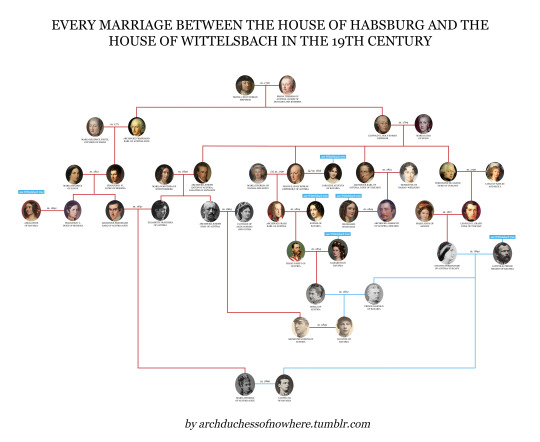
In the 19th century, there were 9 marriages between the House of Wittelsbach and the House of Habsburg:
1816, 29 October. Emperor Franz I of Austria (1768-1835) married Princess Caroline Augusta of Bavaria (1792-1873). They had no children.
1824, 4 November. Archduke Franz Karl of Austria (1802-1878) married Princess Sophie of Bavaria (1805-1872). They had five children, four who survived infancy.
1842, 30 March. Francesco V, Duke of Modena and Archduke of Austria (1819-1875) married Princess Adelgunde of Bavaria (1823-1914). They had one daughter who did not survive infancy.
1844, 16 April. Prince Luitpold of Bavaria, future Prince Regent, (1821-1912) married Archduchess Auguste Ferdinande of Austria-Tuscany (1825-1864). They had four children.
1844, 1 May. Archduke Albrecht of Austria, Duke of Teschen (1817-1895) married Princess Hildegard of Bavaria (1825-1864). They had three children, two who survived infancy.
1854, 24 April. Emperor Franz Josef I of Austria (1830-1916) married Duchess Elisabeth in Bavaria (1837-1898). They had four children, three who survived infancy.
1866, 20 February. Prince Ludwig of Bavaria, future King Ludwig III, (1845-1921) married Archduchess Maria Theresa of Austria-Este (1849-1919). They had thirteen children, eleven who survived infancy.
1873, 20 April. Prince Leopold of Bavaria (1846-1930) married Archduchess Gisela of Austria (1856-1932). They had four children.
1893, 15 November. Archduke Joseph August of Austria (1872-1962) married Princess Auguste of Bavaria (1877-1964). They had six children, four who survived infancy.
#zoom in for better quality!#this was so ridiculously hard to make that it actually took me A YEAR to put it together#because I did it and re-did it several times until it looked sort of decent#I still don't like much how it came out but well. it be like that sometimes#house of habsburg#house of wittelsbach#family tree
40 notes
·
View notes
Photo

Archduke Eugen Ferdinand Pius Bernhard Felix Maria of Austria-Teschen (21 May 1863 – 30 December 1954) was an Archduke of Austria and a Prince of Hungary and Bohemia. He was the last Grand Master of the Teutonic Knights from the Habsburg dynasty.Eugen was the son of Karl Ferdinand, Archduke of Austria (son of Archduke Charles, Duke of Teschen) and of his wife Archduchess Elisabeth Franziska of Austria. He was born at the castle of Gross Seelowitz (Židlochovice), near Brünn (Brno) in Moravia. At his baptism he was given the names Eugen Ferdinand Pius Bernhard Felix Maria. His education was Spartan in character. His country living at Gross Seelowitz and holidays at Gmund alternated with a sound education and strict instruction. At the Albrechtspalais in Vienna, Eugen received instruction in all the military subjects in addition to languages, music and the history of art. At the age of 14 in keeping with the family tradition and like his elder brother Friedrich, he also began his military career with the Tyrolean Kaiserjäger Regiment and was commissioned as a Leutnant on the 27 October 1877. Shortly thereafter he was transferred as an Oberleutnant to a hussar regiment and in the following years participated in many lengthy manoeuvres. In 1882, Eugen took an examination before a commission assembled by Archduke Albrecht that verified his suitability to attend the military academy at Wiener Neustadt. Eugen became then the sole archduke to attend the several year long course at the academy (1883–1885) and subsequently successfully graduated as a fully trained general staff officer.
#archduke eugen ferdinand#archduke of austria#prince of hungary#prince of bohemia#grand master of the teutonic knights#ww1#ww1 era people#the invincible army
13 notes
·
View notes